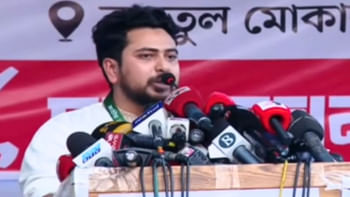1970 elections and Sheikh Mujib's six points
On the sad occasion of the death anniversary of Bangabandhu Sheikh Mujibur Rahman, we tend to go back in time and contemplate the unique circumstances that led to the inevitable birth of Bangladesh. Among the unique circumstances worth mentionable are the Language Movement of 1952, student-people protests throughout the sixties against West Pakistan's economic exploitation, violent anti-Ayub movement of 1968-69, and movement in support of Awami League's Sheikh Mujibur Rahman's Six Points for greater autonomy of East Pakistan.
But movement for autonomy found a new meaning and dimension after the devastating cyclone and tidal surge of 1970 that hit the coastal belt of East Pakistan and the demonstrated apathy of the military government of Gen. Yahya Khan towards the suffering humanity.
The cyclone that struck on November 12 was the deadliest one ever recorded, which took the lives of around 500,000 people. The ferocious waves that came from the ocean flattened everything in their way on land. It has been estimated to be the sixth cyclonic storm of the 1970 North Indian Ocean cyclone season, and was also the most powerful, reaching a strength equivalent to a Category 3 hurricane.
The Pakistani government was severely criticised both by local political leaders in East Pakistan and by the international media for its poor handling of the relief operations following the cyclone. The people of East Pakistan never forgot or forgave the rulers of Pakistan for their colonial attitude towards them.
It was the beginning of the end of East Pakistan as a province of Pakistan and the very naturally the elections that followed paved the way for the creation of Bangladesh.
Below is a short take of the results of the 1970 general elections held simultaneously in the two wings of the then Pakistan.
The elections were held under the supervision of the military regime of Gen. Yahya Khan. The polls in East Pakistan were supposed to to be held in October 1970 but because of that year's floods these were rescheduled for December, and some in January 1971.
In all, twenty-four political parties took part in the elections with as many as 1,957 candidates filing up nomination papers to vie for 300 National Assembly seats. But the number came down to 1,579 after initial scrutiny and withdrawals and these candidates finally contested the elections. The Awami League offered 170 candidates in the elections (out of this number, 167 were for constituencies in East Pakistan).
Jamaat-e-Islami offered 151 candidates, the second-highest number. On the other hand, the Pakistan Peoples Party (PPP) ran 120 candidates, all from West Pakistan and none from East Pakistan. The PML (Convention) offered 124 candidates, the PML (Council) 119 and the PML (Qayyum) 133.
The elections passed off quite peacefully in both wings with relatively high level of public participation. The estimated voter turnout was nearly 63 per cent, with the number of registered voters in East Pakistan being 31,211,220 and in West Pakistan 25,730,280.
In the elections of 1970, Awami League won 167 of 169 East Pakistan seats in the National Assembly but none of West Pakistan's 138 seats. It also bagged 288 out of 300 provincial assembly seats in East Pakistan. Awami League thus got an overwhelming majority in the 313-seat National Assembly to form a governemnt. After the results were declared, Gen Yahya Khan welcomed Sheikh Mujibur Rahman as the 'future prime minsiter of Pakistan.' But Bhotto and some Pakistani military Generals had other plans in their minds.
Mujib's six points
It was in 1966, in Lahore, when Sheikh Mujibur Rahman announced his historic six point political and economic program aimed at attaining greater autonomy of East Pakistan. Among the salient features of the six point program were: the government to be federal in character and parliamentary in nature; members to be elected through direct elections; legislative representation to be based on population; the federal government to have main responsibility of foreign affairs and defence; each wing to have own currency and separate fiscal accounts; taxation to be done at the provincial level; each federal unit to control its own earning of foreign exchange; each unit would have the power to raise its own militia or paramilitary forces.

 For all latest news, follow The Daily Star's Google News channel.
For all latest news, follow The Daily Star's Google News channel. 



Comments